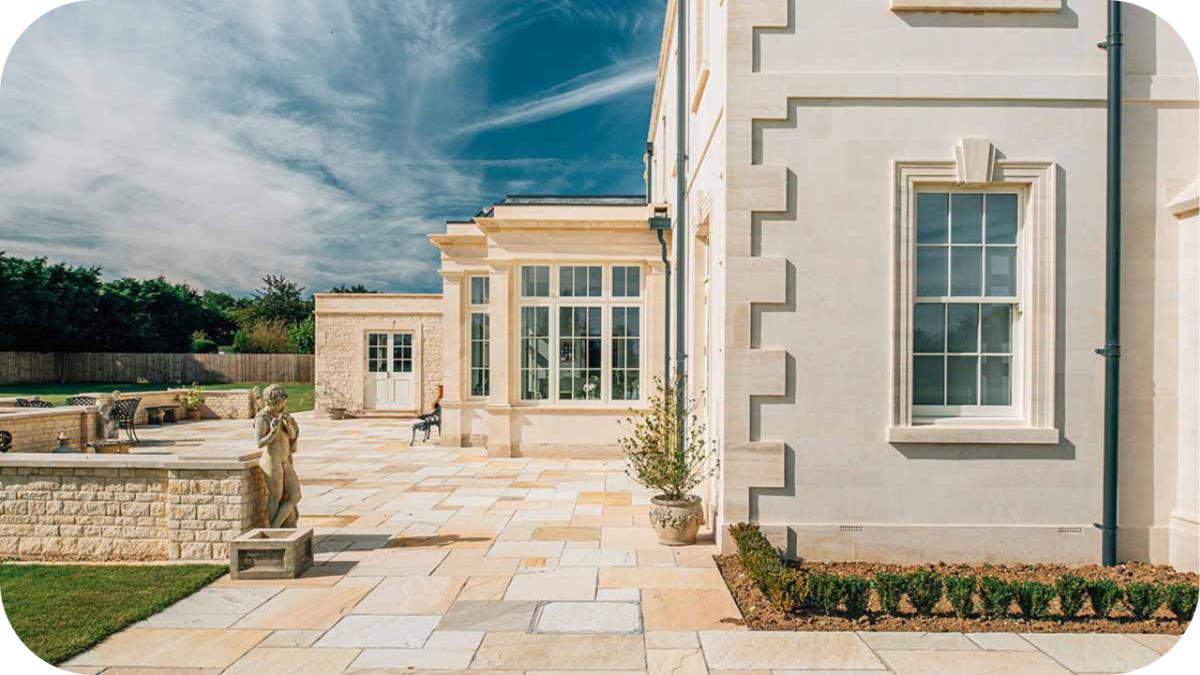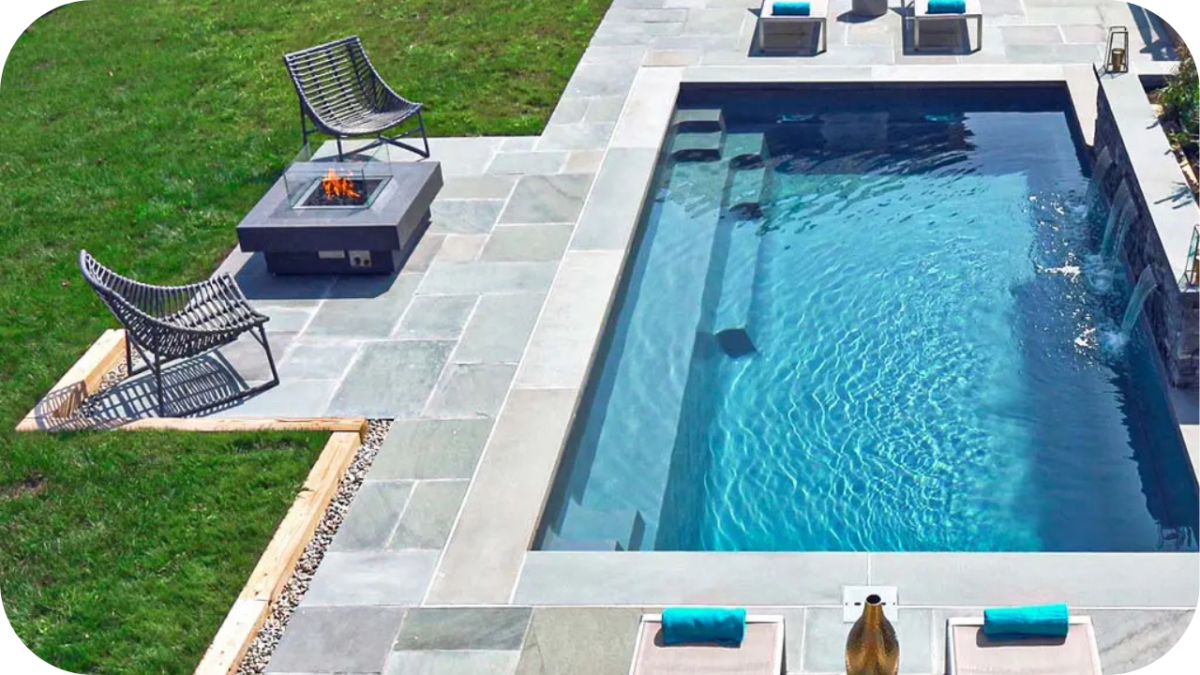Hamptons-Style Homes and the Right Stone to Match
Hamptons-style homes are synonymous with timeless elegance, offering a perfect blend of coastal charm and sophisticated design. With their light, airy feel and use of natural materials, these homes evoke a sense of tranquillity and luxury.
One of the key elements that elevate the Hamptons aesthetic is the use of natural stone. Choosing the right stone not only enhances the beauty of your home but also adds a touch of elegance that complements the coastal vibe.
This article highlights the best stone options for Hamptons-style homes and shares practical ways to incorporate them into your design.
What is Hamptons-Style Design?
Hamptons-style homes are inspired by the luxurious beachside mansions of the Hamptons region in New York, characterised by their relaxed, yet refined atmosphere.
The key elements of this style include neutral colour palettes, open spaces, and abundant natural light. The use of natural materials such as wood, stone, and linen is central to achieving this aesthetic.
Stone, in particular, plays a pivotal role in defining the timeless elegance of Hamptons design, making it essential to choose the right stone to match the aesthetic of your home.
Choosing the Right Stone for Hamptons-Style Homes

Choosing the right stone is key to achieving the timeless elegance of Hamptons-style design. Make sure your stone speaks to the style and longevity you desire:
- Consider the Aesthetic: Choose a stone that complements your overall design theme. Whether you’re after a modern, rustic, or traditional look, the right stone sets the tone.
- Prioritise Light Tones: Hamptons-style homes shine with light, airy colours. Opt for stones in neutral hues like limestone, marble, or sandstone to achieve that serene, coastal feel.
- Think About Durability: Your stone should withstand the test of time. Select a durable material that will perform well both indoors and outdoors, especially with high foot traffic or weather exposure.
- Match the Finish: The stone’s finish is just as important as the material itself. From polished to honed, choose a finish that aligns with the feel of your home and its functionality.
- Consider Maintenance Needs: Choose a stone that’s easy to maintain while still maintaining a high-end look. Some stones, like limestone, require more care, while others, like granite, require less maintenance.
- Blend with Surroundings: Your stone should harmonise with the landscape around it. Think about how your chosen material will integrate with other elements of your Hamptons-style home, like wood accents or large windows.
Top Stone Choices for Hamptons-Style Homes

Here are some of the top stone options that pair beautifully with Hamptons-style homes:
1. Limestone
Limestone is a classic choice for Hamptons-style homes. Its light, neutral tones perfectly complement the coastal aesthetic.
It’s not only visually appealing but also highly durable, making it an excellent option for both indoor and outdoor use.
Limestone is ideal for creating serene, elegant spaces that reflect the natural surroundings of a coastal home.
2. Marble
For a touch of luxury, marble is a stunning choice. Its distinctive veining and smooth finish add an air of sophistication to any Hamptons-style interior.
Marble is most commonly used for countertops, backsplashes, and flooring, offering an elegant and timeless look.
3. Sandstone
Sandstone provides a warm, rustic appeal that works well with the Hamptons style, especially in outdoor areas. It’s perfect for creating a natural, textured look that adds warmth to your home’s design.
Sandstone’s earthy tones make it a versatile option for both modern and traditional Hamptons-style homes.
4. Travertine
Travertine offers a natural, textured finish that can elevate both indoor and outdoor areas. This stone is versatile and can be used for flooring, walls, and even pool surrounds.
Travertine’s soft, muted tones make it an excellent choice for achieving the serene, coastal atmosphere that Hamptons-style homes are known for.
The Benefits of Using Natural Stone in Hamptons-Style Homes

The benefits of natural stone go far beyond just looks—it’s a smart, long-lasting choice for transforming your Hamptons-style home into a true coastal retreat:
- Timeless Elegance: Natural stone adds a touch of luxury that never goes out of style. Its unique patterns and textures bring a classic, sophisticated charm to Hamptons-style homes.
- Durability and Longevity: Stone is a durable material that can withstand the elements and everyday wear. Whether it’s for high-traffic areas or outdoor features, stone will last for decades, making it a great long-term investment.
- Sustainability: Natural stone is an eco-friendly choice. Sourced from the earth, it’s a sustainable material that reduces the need for synthetic alternatives, aligning with environmentally-conscious design principles.
- Low Maintenance: Many natural stones, such as granite and marble, are relatively low-maintenance, requiring only occasional sealing and gentle cleaning to preserve their beauty and functionality.
- Increased Property Value: Incorporating high-quality stone into your Hamptons-style home can boost the property’s value. Natural stone adds a premium, high-end finish that prospective buyers will appreciate.
- Versatility: Natural stone is highly versatile, suitable for a wide range of applications i.e fireplaces and outdoor areas. It blends seamlessly into both traditional and modern Hamptons designs.
- Improved Indoor Air Quality: Unlike synthetic materials, natural stone doesn’t emit harmful chemicals or toxins, making it a healthier choice for the home, contributing to better indoor air quality.
How to Incorporate Stone into Your Hamptons Home Design

Incorporating stone into your Hamptons-style home can create a harmonious balance of elegance and natural beauty. Here are several ways to use stone effectively in your design:
Stone Fireplaces
A stone fireplace serves as the perfect focal point for any Hamptons-style living room. Choose materials like limestone or travertine for a clean, coastal look that complements the natural light and neutral tones typically found in Hamptons homes.
Stone Feature Walls
Feature walls are an excellent way to introduce stone into your interior design. A stone feature wall can add texture and depth to living rooms, dining areas, or even bedrooms, creating a striking contrast to soft, light colours.
Outdoor Stone Cladding
For the exterior, stone cladding can be used to create a stunning, durable finish on walls, columns, or garden structures. Choose stones like sandstone or granite to provide a rugged yet sophisticated look that complements the coastal environment.
Stone Garden Paths and Borders
Stone pathways and garden borders are a fantastic way to incorporate natural stone into your landscape design. Sandstone or travertine work well for creating elegant walkways that seamlessly integrate with the outdoor Hamptons aesthetic.
Stone Pool Surrounds and Patios
Stone is a perfect material for outdoor spaces, especially around pools and patios. Travertine, with its cool, textured surface, is ideal for pool surrounds, while larger stone tiles can create an expansive, luxurious patio area for entertaining.
Stone Sculptures and Decorative Elements
Stone sculptures, planters, and garden ornaments are great for adding a touch of artistic elegance to your home’s exterior. These elements can be placed strategically in gardens or courtyards to enhance the natural, coastal feel of your Hamptons design.
Choosing the Right Finish for Your Stone

The finish of your stone plays a significant role in its overall appearance and function. Consider the following options:
- Polished Finish: A polished finish gives the stone a glossy, reflective surface that enhances its colour and texture. This finish works well in high-end interiors like kitchens and bathrooms, where you want to showcase the stone’s natural beauty and elegance. It’s ideal for materials like marble and granite.
- Honed Finish: A honed finish provides a matte, smooth surface that has a soft, understated appearance. This finish is perfect for high-traffic areas, as it’s less prone to showing smudges and fingerprints. It’s a great choice for flooring, countertops, and walls in both modern and traditional Hamptons-style homes.
- Brushed Finish: A brushed finish gives the stone a textured, slightly worn appearance, adding a rustic or natural charm to your design. This finish is often used for outdoor areas or surfaces that aim to achieve a more organic, earthy feel, such as sandstone or travertine.
- Tumbled Finish: A tumbled finish offers a distressed, old-world look with rounded edges and a soft texture. It’s often used in outdoor patios or walkways where a more weathered appearance is desired. This finish adds character and blends well with the natural, relaxed Hamptons vibe.
- Leathered Finish: For a more luxurious and tactile experience, a leathered finish has a soft, matte texture with a subtle sheen. This finish is ideal for surfaces that get a lot of use, like kitchen countertops, as it’s more resistant to scratches and smudges while offering a sophisticated, modern appeal.
Maintaining Stone in Hamptons-Style Homes

Proper maintenance is crucial for preserving the beauty and longevity of your stone. Here are some maintenance tips:
- Regular Cleaning: Keep your stone looking fresh by cleaning it regularly with a mild detergent and warm water. Avoid harsh chemicals that could damage the stone’s surface. A soft cloth or sponge works best to prevent scratches.
- Sealing: To protect your stone from stains and moisture, apply a high-quality sealant. Some stones, like limestone and travertine, require sealing every 1-2 years, while others like granite may need it less frequently.
- Spot Clean Stains Immediately: For spills or stains, act quickly. Blot (don’t rub) the area with a clean cloth to soak up excess liquid. For stubborn stains, consult a professional stone cleaner to avoid permanent damage.
- Avoid Abrasive Tools: Never use steel wool or abrasive scrubbing pads on your stone surfaces. These can scratch and dull the finish. Instead, opt for soft brushes or microfiber cloths.
- Protect from Heat: Avoid placing hot pots, pans, or appliances directly onto stone surfaces. The heat can cause discoloration or even cracks, particularly in stones like marble.
- Use Coasters and Mats: Place coasters under glasses, cups, and bottles to prevent water rings and spills. Additionally, use mats or rugs in high-traffic areas to protect your stone flooring from dirt and grit.
- Professional Care: For deep cleaning or any damage repairs, consider hiring a professional stone restoration service. They can properly buff, polish, and reseal stone to restore its original luster.
Why Splendour in Stone is the Best Choice for Your Hamptons-Style Home
At Splendour in Stone, we offer a premium selection of natural stones that are perfect for Hamptons-style homes.
With our extensive experience, advice and high-quality stone options, you can transform your home into a coastal sanctuary.
Whether you’re looking for limestone, marble, sandstone, or travertine, we have the perfect stone to match your style.
Our commitment to quality and customer satisfaction ensures that you’ll receive only the best materials for your home.
Over To You
Choosing the right stone is essential in achieving the coastal elegance of Hamptons-style homes. From the timeless beauty of limestone to the luxurious allure of marble, the right stone can elevate the look and feel of your home. Contact Splendour in Stone today to find the perfect stone for your Hamptons-style design.














